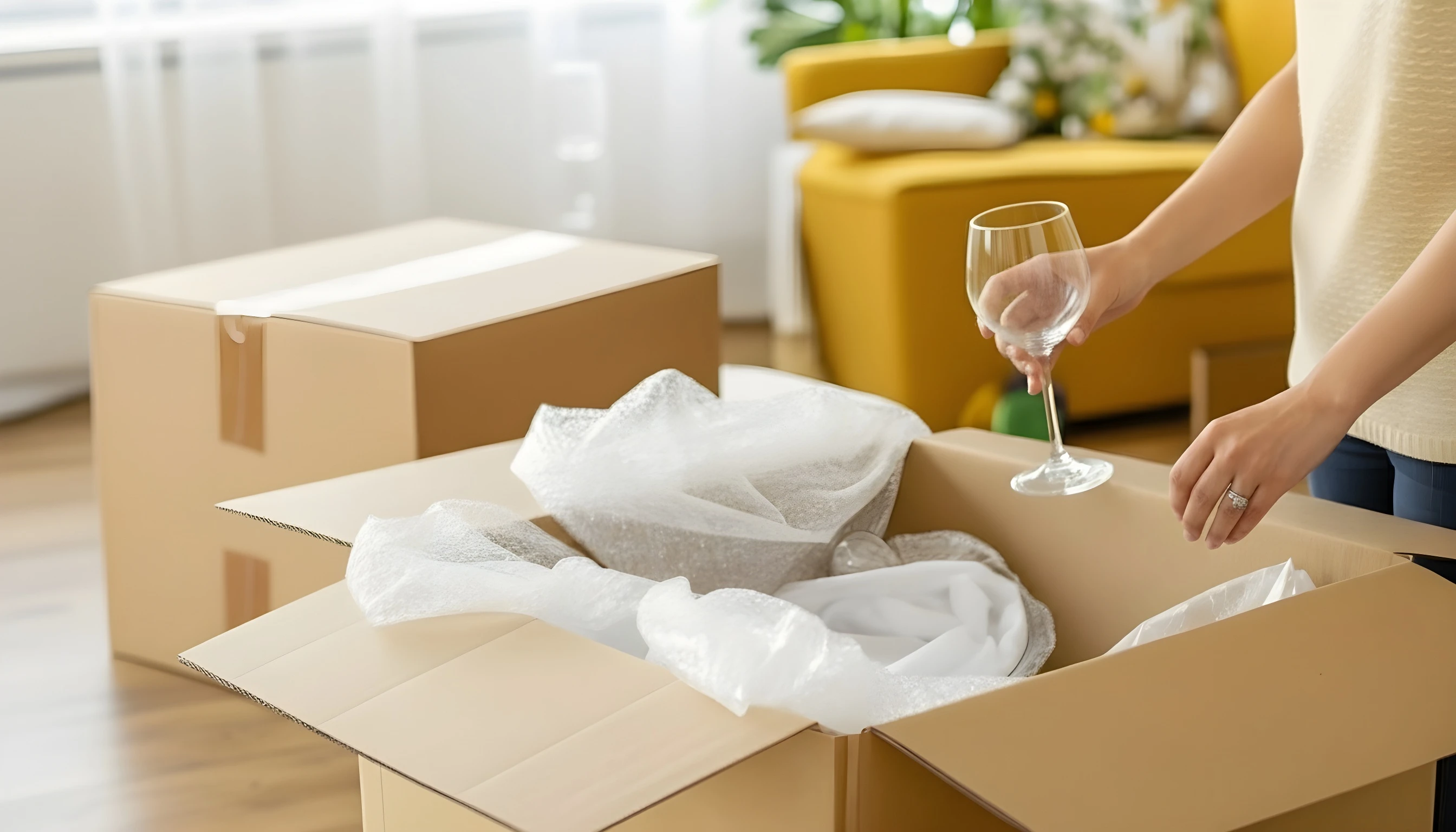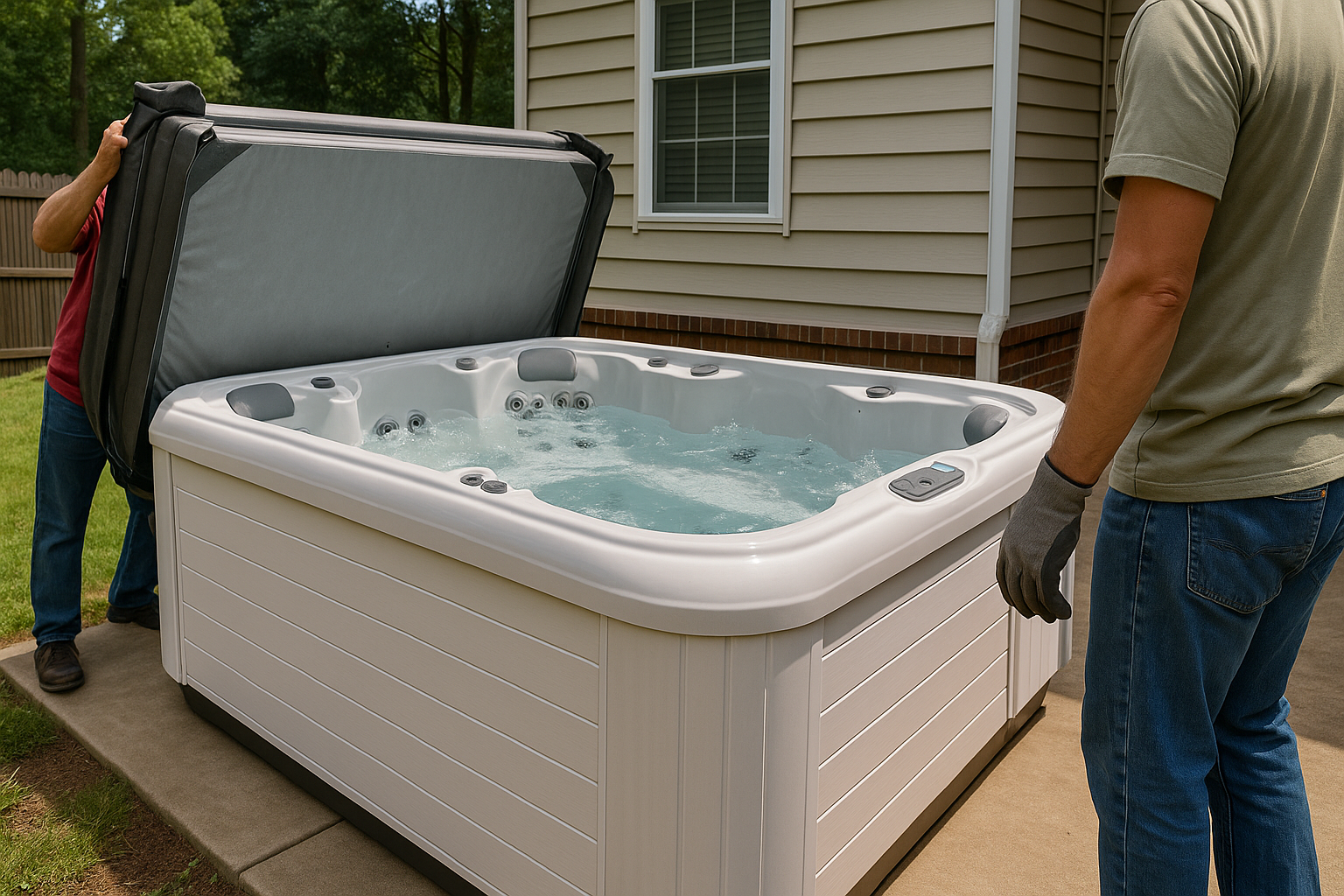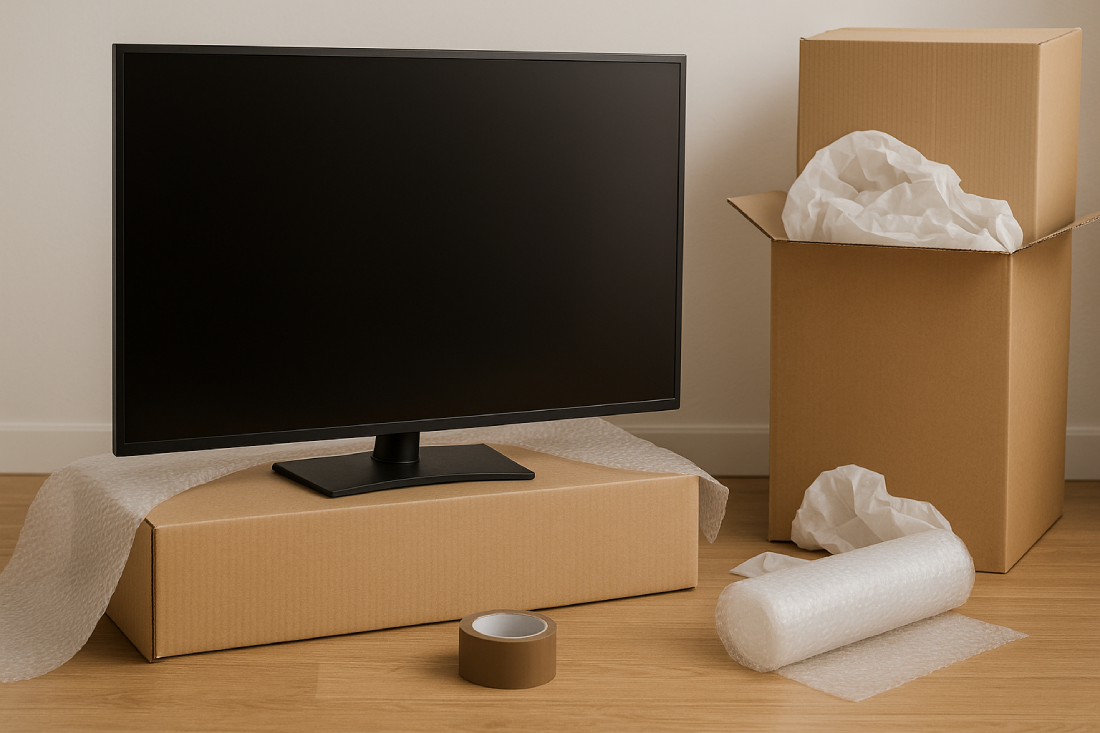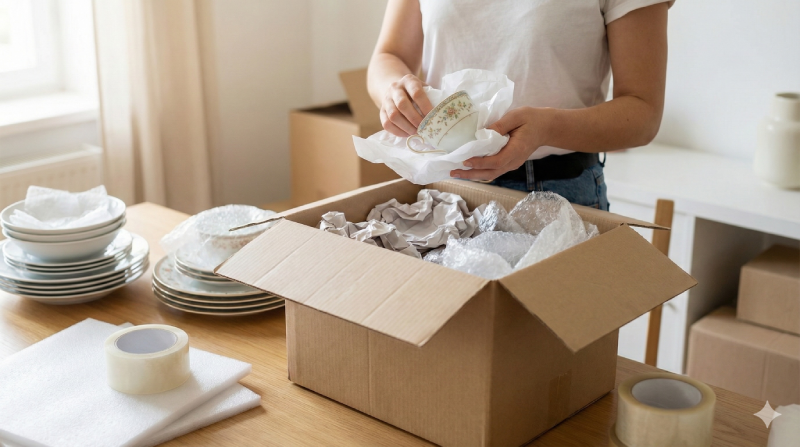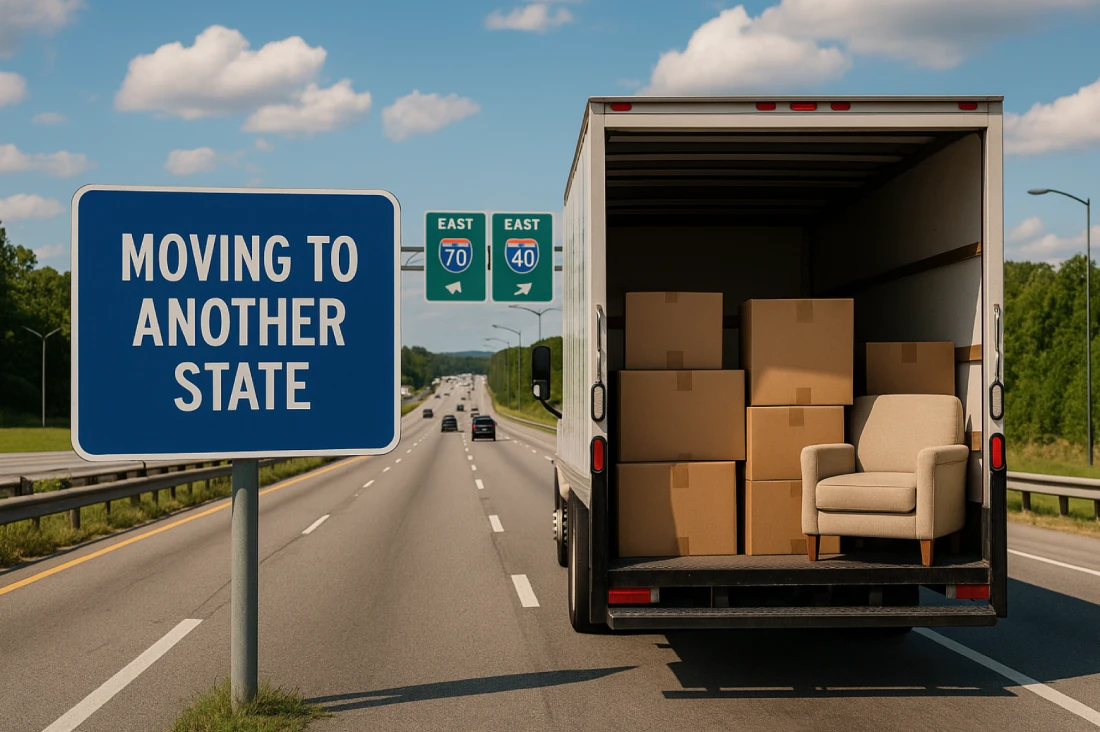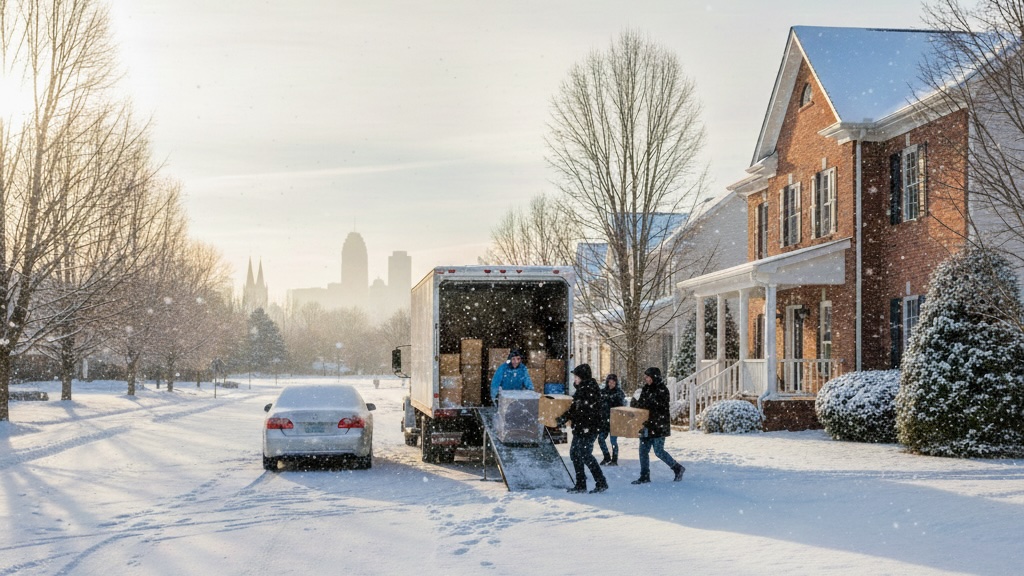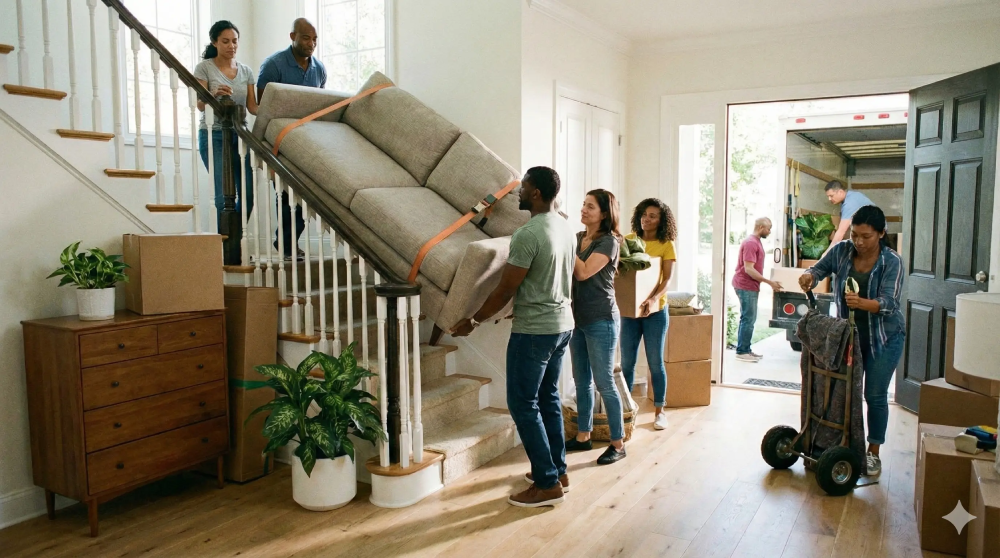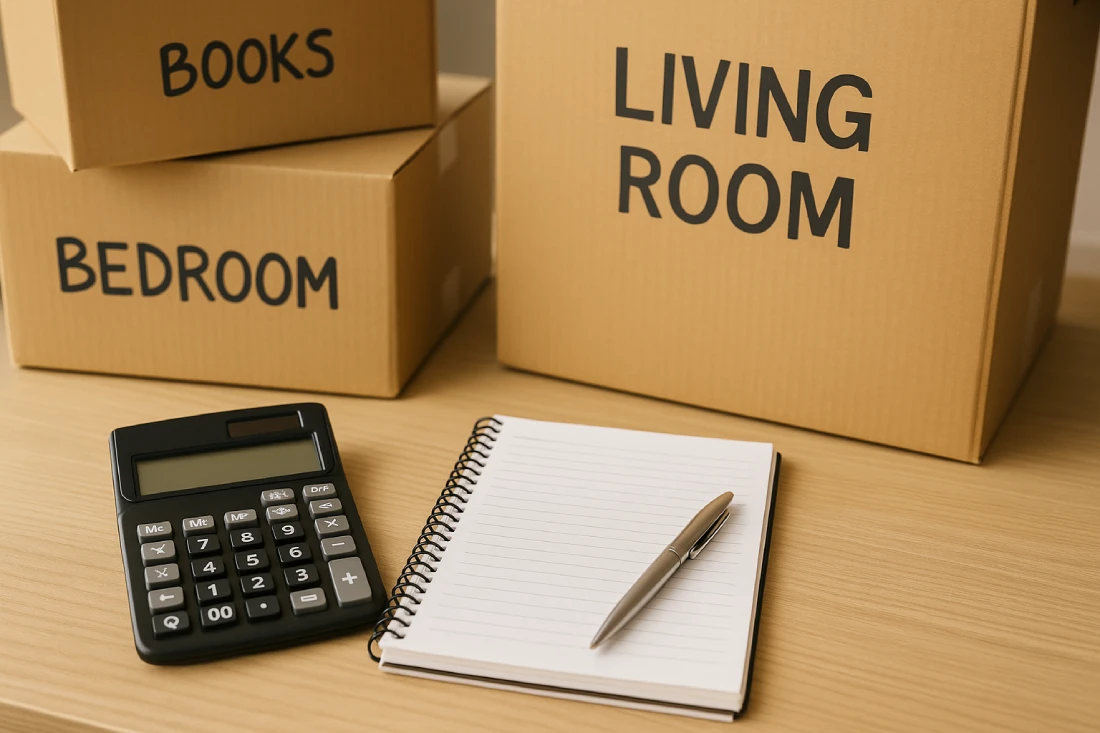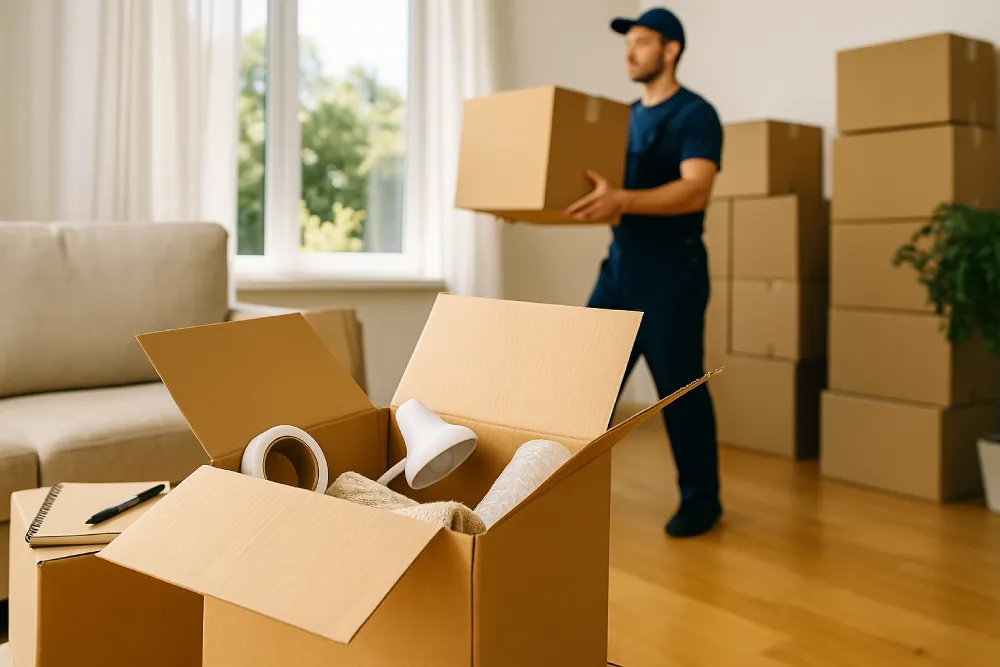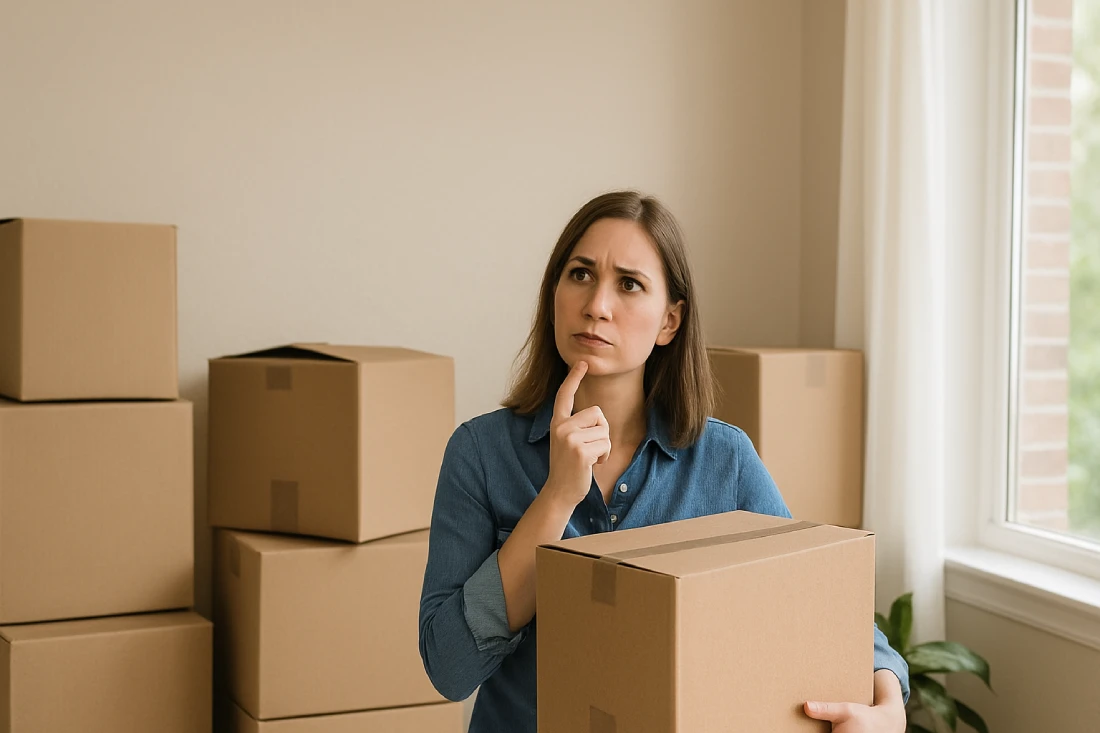How to Pack Plants for Moving
If you have plants, learning how to pack plants for moving is important to keep them alive during the move. Plants face unique challenges when moving: temperature swings, darkness, physical damage, and dehydration. This guide covers preparation timelines, packing techniques for different plant sizes, transport options for local and long-distance moves, legal considerations, and post-move care to help your plants thrive in their new home.
Why Moving Plants Requires Special Care
Plants are living things that need light, water, air, and stable temperatures to survive. Unlike furniture or boxes, you can't just pack them away for days. Moving stresses plants in several ways:
- Temperature fluctuations: Extreme heat or cold during transport can damage or kill plants
- Darkness: Too much time without light weakens plants and can cause leaves to fall off
- Physical damage: Broken stems, crushed leaves, or disturbed roots from poor packing
- Dehydration or overwatering: Finding the right moisture balance for transit
There are also legal considerations when moving plants across state lines. Some states have agricultural restrictions to prevent the spread of pests and diseases. We'll address these regulations below.
Planning Your Plant Move: Timeline and Preparation
Success starts with planning ahead. Good preparation reduces stress on your plants, lowers the risk of damage during transit, and helps you comply with any legal requirements for transporting plants across state lines. Here's a timeline to help you prepare:
4 Weeks Before Moving
- Research your destination climate: Check the USDA hardiness zone of your new location. Will your plants survive there? Tropical houseplants might struggle in very dry climates, and outdoor garden plants from warm regions won't survive harsh winters. Decide which plants are worth moving and which should stay behind.
- Check state regulations: Visit the USDA website or your destination state's agriculture department to learn about restrictions on moving plants. Some states require inspection certificates, and certain plants (like citrus) may be banned.
- Start decluttering your collection: Be realistic about which plants to move. Very large plants, sick plants, or those that won't suit your new home might be better given to friends or left behind. Consider taking cuttings of favorite plants as a backup.
2 Weeks Before Moving
- Inspect for pests: Check all plants carefully for signs of bugs, disease, or infestations. Treat any problems now with appropriate insecticides or fungicides. You don't want to bring pests to your new home or risk spreading them during transport.
- Prune as needed: Trim back overgrown branches and remove dead or yellowing leaves. This makes the plant smaller for easier packing and helps it focus energy on survival rather than maintaining too much foliage.
- Repot if necessary: If plants are in ceramic or heavy decorative pots, consider moving them to lighter plastic nursery pots. This reduces weight and breakage risk. If a plant is root-bound, repotting into fresh soil now gives it time to settle before the move.
1 Week Before Moving
- Gradually reduce watering: Start letting soil dry out slightly. You want plants to be moist but not soggy on moving day. Wet soil is heavy and can leak, plus waterlogged plants are more likely to get root rot if they sit in transit.
- Gather packing materials: Collect boxes (preferably with ventilation holes), packing paper, bubble wrap, and any other supplies you'll need. Cardboard boxes work well, but make sure they're sturdy enough to hold the weight of pots and soil.
1-2 Days Before Moving
- Water plants lightly: Give plants a moderate watering 1-2 days before the move so soil is moist but not dripping. This keeps roots hydrated without creating a mess.
- Protect pots: If you're keeping plants in their pots, you can place plastic bags over the soil and secure them around the stem to prevent spills. Some people use packing peanuts or shredded paper at the bottom of pots to lighten them and improve drainage.
Moving Day
- Pack plants last: Load plants into your vehicle as the last items so they spend minimal time in boxes.
- Do not water: Avoid watering on moving day to prevent leaks and added weight.
- Unpack plants first: At your destination, unpack and unbox plants right away to give them light and air.
How to Pack House Plants for Moving
Learning proper packing techniques and moving hacks help prevent damage during transport. Without good packing, plants can suffer broken stems, crushed leaves, root disturbance, soil spills, and even death from temperature exposure or dehydration. Follow these steps for how to pack house plants for moving:
Step 1: Choose the Right Containers
Select sturdy cardboard boxes that fit your plants with a little room for cushioning. Use boxes with ventilation holes or poke a few holes yourself to allow airflow. For very tall plants, you may need to create custom boxes or use wardrobe boxes.
Step 2: Cushion the Bottom
Line the bottom of each box with crumpled packing paper or bubble wrap. This provides shock absorption and prevents pots from shifting.
Step 3: Secure the Pot
Place the potted plant in the center of the box. If there's extra space, fill it with more packing paper, towels, or bubble wrap to keep the pot from moving. For extra security, you can wrap the pot itself in bubble wrap before placing it in the box.
Step 4: Protect the Foliage
For smaller plants, gently gather leaves and stems upward and loosely wrap them in tissue paper or a paper bag. This prevents branches from breaking. For larger plants, you might use stakes or supports to keep stems upright. Avoid wrapping too tightly (plants need some air circulation).
Step 5: Close and Label
Close the box, but don't tape it completely shut if the trip is short (plants need airflow). Poke additional holes if needed. Label boxes clearly with "LIVE PLANTS – FRAGILE – THIS SIDE UP" and mark which side should face up. Indicate if any plants have special needs (e.g., "Keep Cool" or "Keep Warm").
Step 6: Keep Plants Separate
Don't pack plants in the same boxes as heavy items or anything that could shift and crush them. Keep plant boxes separate from other moving items.
How to Transport Plants in a Car
For local or medium-distance moves, transporting plants in your personal vehicle is often the safest option. Here's how to transport plants in a car effectively:
- Use the back seat or cargo area: Place plant boxes on the floor of the back seat or in the trunk/cargo area where they're less likely to tip over. The floor provides a stable, flat surface.
- Secure boxes: Use bungee cords, straps, or even seat belts to keep boxes from sliding during turns or sudden stops. Some people buckle in particularly precious plants using the seat belt.
- Control the climate: Keep the car's temperature comfortable (not too hot or too cold). Use air conditioning or heat as needed, but avoid blasting vents directly on plants. In summer, park in shade when stopping. In winter, warm up the car before loading plants.
- Minimize time in the car: Try to make the drive as direct as possible. If you must stop overnight, bring plants inside with you rather than leaving them in the car where temperatures can become extreme.
- Provide light if possible: For longer car trips (over a day), try to keep plants near windows where they can get some natural light, but avoid direct harsh sunlight that could overheat them.
Special Tips for Large Plants
Moving large plants is challenging because of their weight, size, and delicate root systems. They're difficult to lift, transport safely, and keep stable during transit. Follow these tips to make the job easier while keeping your plants in good condition:
- Use a dolly or hand truck: Moving heavy pots is much easier with a wheeled cart. Protect floors with plastic sheeting or towels.
- Transport upright if possible: Large plants often do best standing up. Secure them in the vehicle with straps to prevent tipping. You might wedge them between other items (softly) for stability.
- Protect branches: Wrap delicate branches loosely with soft cloth or netting. For trees, you might tie branches gently upward to reduce their spread.
- Consider professional plant movers: For very valuable or large specimens, there are specialty plant moving services. While standard moving companies won't transport plants, some niche services do exist in larger cities.
How to Transport Plants When Moving Long Distance
Long-distance moves present additional challenges because plants may need to spend long periods in transit without access to light, stable temperatures, or fresh air. The longer the journey, the greater the risk of stress, dehydration, or damage. If you're just learning what it takes to move across states, you have a few options:
Option 1: Drive Them Yourself
If you're driving to your new home, taking plants with you is ideal. Follow the car transport tips above, but also:
- Plan for overnight stops: Book pet-friendly hotels (they're often plant-friendly too) and bring plants inside each night.
- Pack a plant care kit: Bring a small watering can or spray bottle, and check plants each evening for water needs.
- Limit time in boxes: If driving over several days, you might unbox plants at night for air and light, then re-box each morning. This is labor-intensive but can help plants survive multi-day trips.
Option 2: Ship Plants
For very long distances or if you're flying, you may need to ship plants when moving. Learning how to ship plants when moving requires careful packaging and selecting the right shipping service. Here's how:
- Choose a shipping service: USPS, FedEx, and UPS all allow plant shipments (check their guidelines). Use the fastest service you can afford (express or 2-day) to reduce time in transit.
- Use proper packaging: Remove plants from pots and wrap roots in moist paper towels, then plastic. Place in a sturdy box with cushioning. Some people ship plants "bare-root" this way to reduce weight. Small potted plants can also be shipped if packed very securely.
- Label clearly: Mark "LIVE PLANTS – PERISHABLE" on all sides of the box.
- Ship early in the week: Avoid shipping on Fridays so plants don't sit in a warehouse over the weekend.
- Consider temperature: In extreme weather, include heat packs (winter) or cold packs (summer) in the box, separated from the plant by packing material.
Note: Shipping plants can be risky. There's no guarantee of conditions during transit, and some plants don't survive. It's best for hardier species and as a last resort.
Option 3: Air Travel
If you're flying, you can bring plants as carry-on or checked luggage on domestic flights. Here's what to know:
- Carry-on is safer: Keep plants with you in the cabin to monitor conditions. They must fit under the seat or in the overhead bin.
- Prepare for TSA: Security will inspect plants. Soil may be scrutinized, so consider bare-root or minimal soil. Expect extra screening time.
- Check airline policies: Each airline has rules on plant transport. Call ahead to confirm.
- International flights: You generally cannot bring plants internationally without a phytosanitary certificate, and many countries prohibit soil entirely. It's often not worth the hassle for international moves. Consider leaving plants behind or buying new ones at your destination.
State Regulations and Legal Considerations
Before you move plants across state lines, check state agricultural laws. Many states have restrictions to prevent the introduction of pests, diseases, or invasive species. Here's what to know:
- Inspection certificates: Some states (such as California, Florida, and Hawaii) require a certificate of inspection from a state agriculture official for certain plants. This certifies the plant is pest-free.
- Prohibited plants: Certain species may be banned entirely. For example, citrus trees are restricted in many states to prevent citrus greening disease.
- Soil restrictions: A few states prohibit bringing in soil from other states. You may need to bare-root plants or use sterile potting mix.
- How to comply: Visit the USDA's website or contact your destination state's Department of Agriculture a few weeks before your move. They can tell you what's allowed and whether you need any permits. It's better to leave a plant behind than risk it being confiscated at a state border or facing a fine.
Taking these regulations seriously protects agriculture and ecosystems. Plan ahead for a smooth, legal move.
Caring for Plants After the Move
Once you arrive at your new home, your plants will need immediate care to recover from the stress of moving. Follow these steps to help them adjust:
Unpack Immediately
Unbox plants as soon as you arrive. Remove any wrapping from leaves and place them in a location with appropriate light. Even a few extra hours in a dark box can stress plants further.
Water and Inspect
Check the soil moisture and water if needed, but don't overdo it (roots may be stressed). Inspect plants for any damage, broken stems, or signs of pests that may have emerged during the move.
Allow Time to Acclimate
Plants may experience shock from the move. It's normal for some leaves to yellow or drop in the first few weeks. Place them in their ideal location (matching light and humidity needs) and give them time to adjust. Avoid repotting or fertilizing right away. Let them settle for a few weeks first.
Adjust for Climate Differences
If your new home has different humidity or temperature from your old one, help plants acclimate gradually:
- Dry climate: Use a humidifier, mist plants, or place them on trays of pebbles and water.
- Cold climate: Keep tropical plants away from drafty windows and maintain stable indoor temperatures.
- Different light levels: If your new home has less natural light, consider grow lights. If it's brighter, watch for signs of sunburn and adjust placement.
Monitor for Pests
Stress can make plants more susceptible to pests. Keep an eye out for bugs in the weeks following the move. Quarantine any plant showing signs of infestation away from your other plants and treat promptly.
Special Considerations for Garden Plants
Moving outdoor garden plants is more challenging than houseplants because they have extensive root systems adapted to their current soil and climate, making them much more susceptible to transplant shock and often too large or heavy to transport safely. Here are some tips:
- Timing matters: If possible, move perennials in their dormant season (early spring or fall). This reduces transplant shock.
- Dig carefully: Excavate a generous root ball—the more roots you keep, the better the plant's chance of survival. Wrap the root ball in burlap and keep it moist.
- Replant quickly: Garden plants don't travel well. Try to replant them within a day or two of digging them up.
- Consider cuttings or seeds: For large shrubs or trees, it may be more practical to take cuttings or collect seeds rather than move the entire plant.
- Evaluate if it's worth it: Mature garden plants often don't survive transplanting, especially if you're moving to a different climate zone. Sometimes it's better to start fresh with plants suited to your new garden.
Alternatives to Moving Plants
Sometimes moving plants isn't practical. Here are alternatives to consider:
- Take cuttings: Propagate cuttings from your favorite plants. They're easy to transport and you can grow new plants at your destination.
- Gift them: Friends, family, or neighbors might love to adopt your plants. It's a way to give your plants a good home without the stress of moving them.
- Sell or donate: Local plant swaps, Facebook groups, or gardening clubs might be interested in taking plants off your hands.
- Leave cuttings with someone to ship later: If you're moving far and need time to settle, leave plants with a trusted friend who can ship cuttings or small plants to you once you're ready.
These options work well for large, difficult-to-move plants or if you're moving internationally, where plant transport is heavily restricted.
Moving Plants in the Cold
Moving plants in winter or freezing conditions requires special care, as these temperatures can be harsh. The following tips can help your plants survive the journey in cold weather:
- Warm up the vehicle: Before loading plants, heat your car or truck to a comfortable temperature.
- Insulate plants: Wrap plant boxes or pots in blankets, towels, or even newspaper for insulation. Use heat packs (the kind for camping or hand warmers) if needed, but don't let them touch the plant directly.
- Minimize exposure: Move plants quickly from house to vehicle. Even a few minutes in sub-zero temperatures can cause frostbite on leaves.
- Keep them inside overnight: If traveling over multiple days, always bring plants into heated indoor spaces at night.
Tropical plants are vulnerable to cold. If you're moving in winter, consider whether it's worth the risk or if alternative options (like cuttings) might be safer.
Tips for Moving Plants: Quick Do's and Don'ts
Here's a handy reference of tips for a successful plant move:
Do:
- Plan ahead and check state regulations early.
- Prune and inspect plants 2 weeks before moving.
- Use lightweight plastic pots to reduce weight.
- Pack plants in sturdy, ventilated boxes with cushioning.
- Transport plants in your personal vehicle if possible.
- Keep plants at a stable, comfortable temperature.
- Unpack plants immediately upon arrival.
- Give plants time to acclimate and recover.
Don't:
- Don't water heavily right before the move (soil should be moist, not soaking).
- Don't pack plants with heavy items or in airtight containers.
- Don't leave plants in a hot or cold vehicle for extended periods.
- Don't expect professional movers to transport your plants.
- Don't pack plants in darkness for more than 48 hours.
- Don't forget to research your new climate and whether plants will thrive there.
When to Hire Movers for Plants
Most professional moving companies won't transport plants, but there are some situations where you might be able to hire help:
- Local moves within the same state: Some local moving companies may agree to transport plants for short-distance moves within state borders, where agricultural restrictions are less strict.
- Labor-only movers: If you're renting a U-Haul or using your personal vehicle, consider hiring labor-only movers to help with loading and unloading. You maintain full control over packing and climate conditions during transport, but the movers handle the heavy lifting. This is helpful for large, heavy potted plants. It saves money compared to full-service movers, prevents injury from lifting awkward or weighty specimens, and speeds up the move, which reduces stress on your plants by minimizing their time in transit.
- Specialized plant movers: In major cities, you might find specialized services that focus on moving delicate items, including plants. These are rare but worth researching if you have valuable or large specimens.
- White-glove moving services: High-end moving companies offering white-glove service may be willing to transport plants with extra care, though this comes at a premium price.
Before hiring any mover for plants, confirm in writing that they'll accept responsibility and ask about their experience with plant transport. If using labor-only movers, make sure you have proper climate control in your vehicle during the move.
In most cases, transporting plants yourself remains the safest and most reliable option, giving you full control over temperature, handling, and timing. If time or physical constraints prevent you from doing this, knowing how much different types of movers cost will help you budget accordingly.
Final Thoughts On Moving with Plants
Moving with plants takes planning, care, and a bit of effort, but it's possible to relocate your green friends successfully. By following this guide on how to pack plants for moving, you'll minimize stress on your plants and maximize their chances of thriving in their new home.
Remember the main steps: plan ahead, check regulations, prep your plants with pruning and pest control, pack them securely with cushioning and ventilation, transport them in a climate-controlled vehicle when possible, and unpack them immediately at your destination. These strategies will help your beloved greenery make the journey safely.
With a little love and attention, your plants will soon be settled and growing in your new space. Happy moving, and may your plants flourish wherever you go!
Frequently Asked Questions
Will professional movers transport my plants?
No. Most moving companies won't transport plants due to liability concerns and state agricultural laws. You'll need to move them yourself or ship them separately.
Should I water my plants on moving day?
No. Water 1-2 days before moving so the soil is moist but not soggy. Wet soil is heavy and can cause root rot during transit.
How long can plants survive in a box?
Most plants tolerate 1-2 days in darkness if kept cool and moist. Don't exceed 48 hours. For longer moves, unbox plants at night for air and light.
Do I need permits to move plants across state lines?
Some states require inspection certificates for pest-free verification, and others ban certain species like citrus. Check with your destination state's Department of Agriculture weeks in advance to avoid fines or confiscation.
Can I take plants on an airplane?
Yes for domestic U.S. flights. Carry-on is safer than checked luggage. Allow extra time for TSA inspection. International flights heavily restrict plants and usually require phytosanitary certificates.
How do I move a large potted tree?
Use a dolly or hand truck, protect floors with plastic, and transport upright, secured with straps. For massive outdoor trees, take cuttings instead. Transplanting often fails.
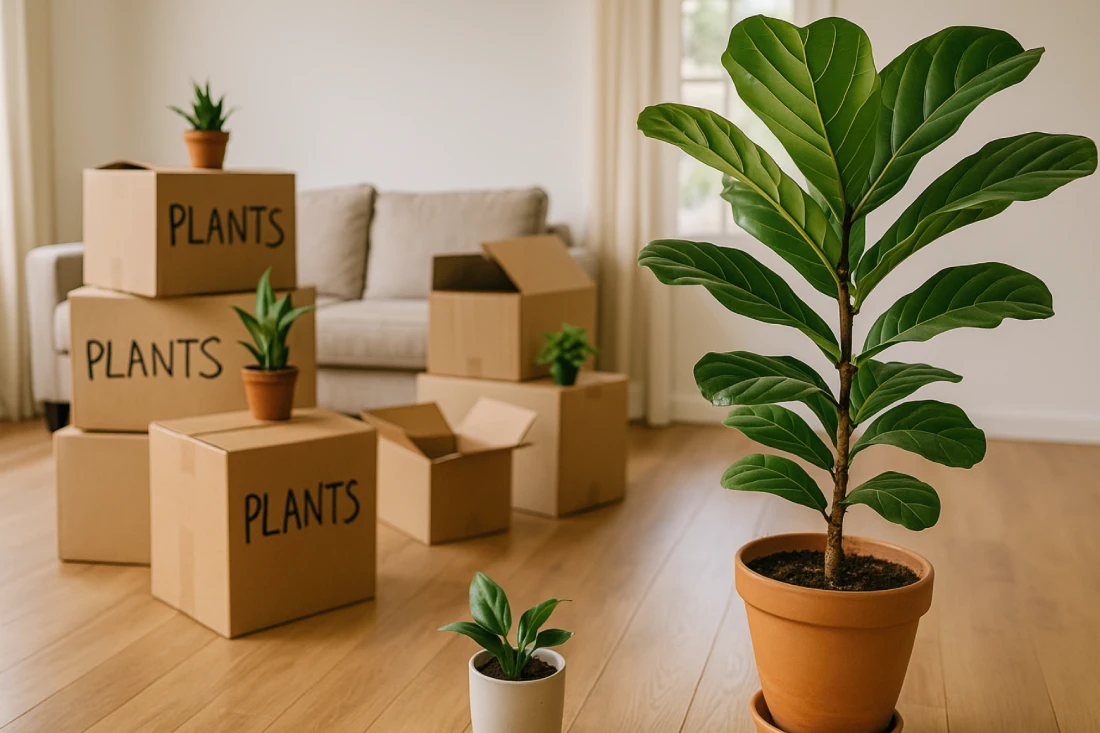


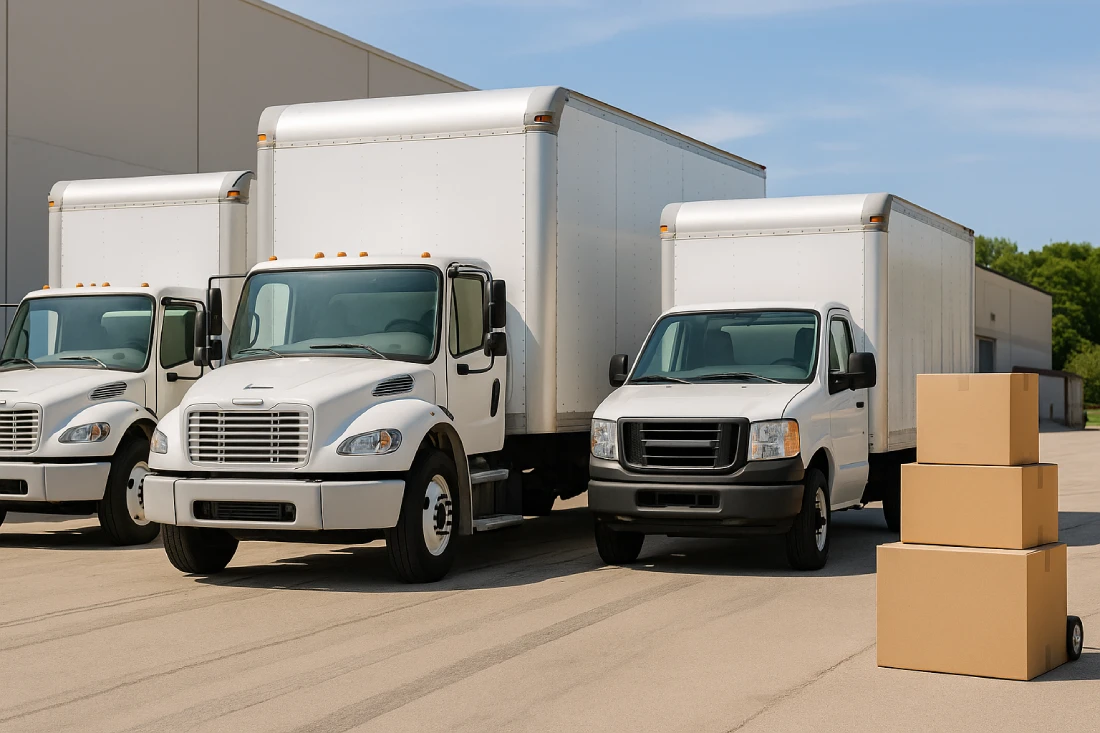










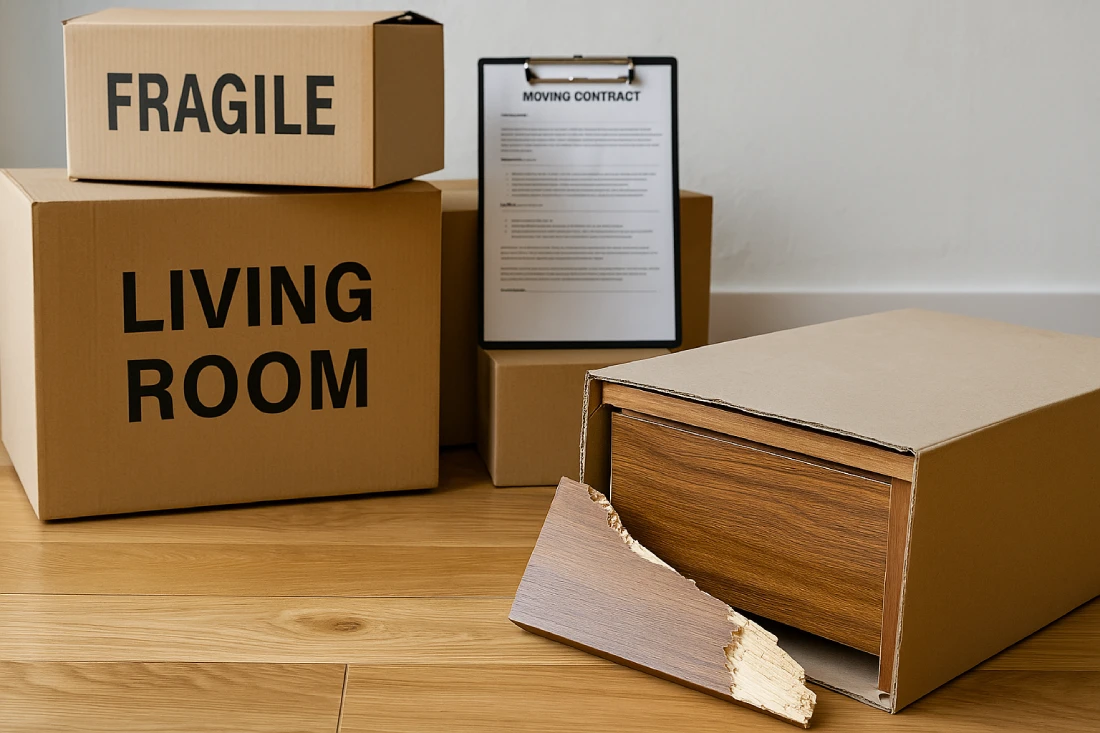

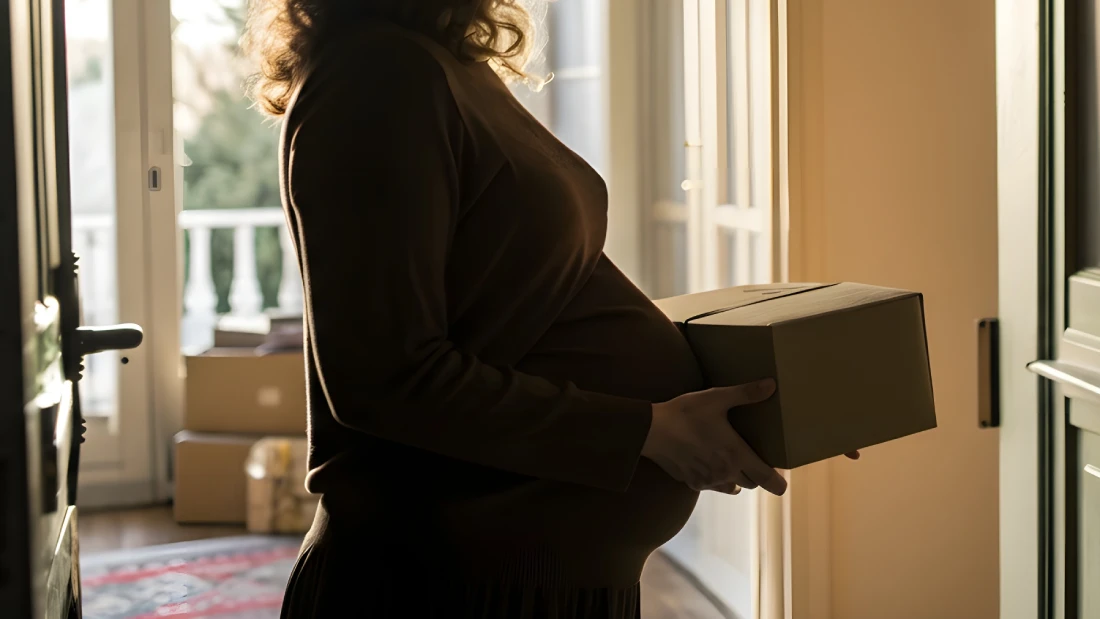



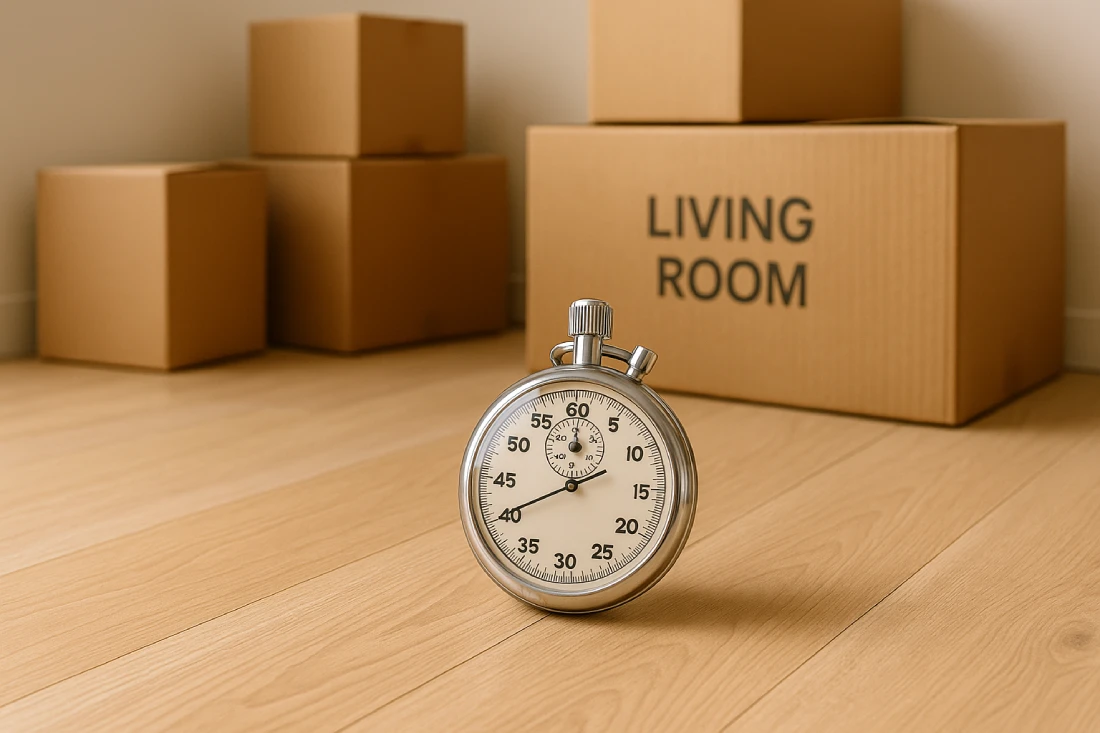
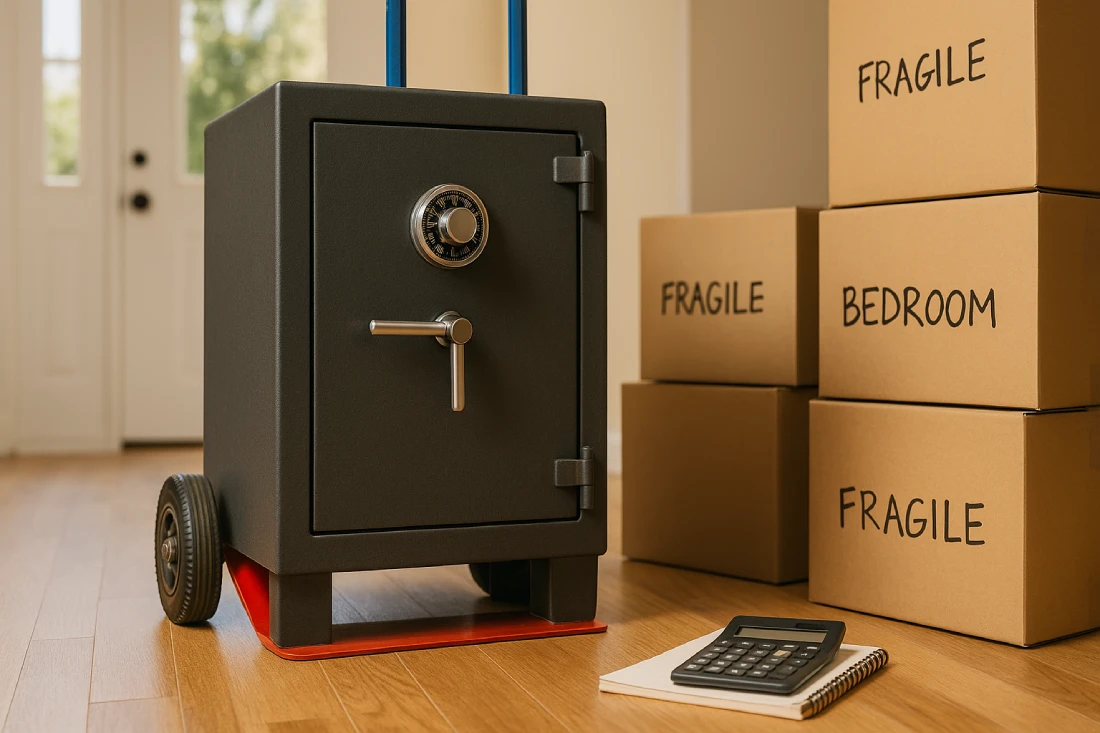
.webp)

